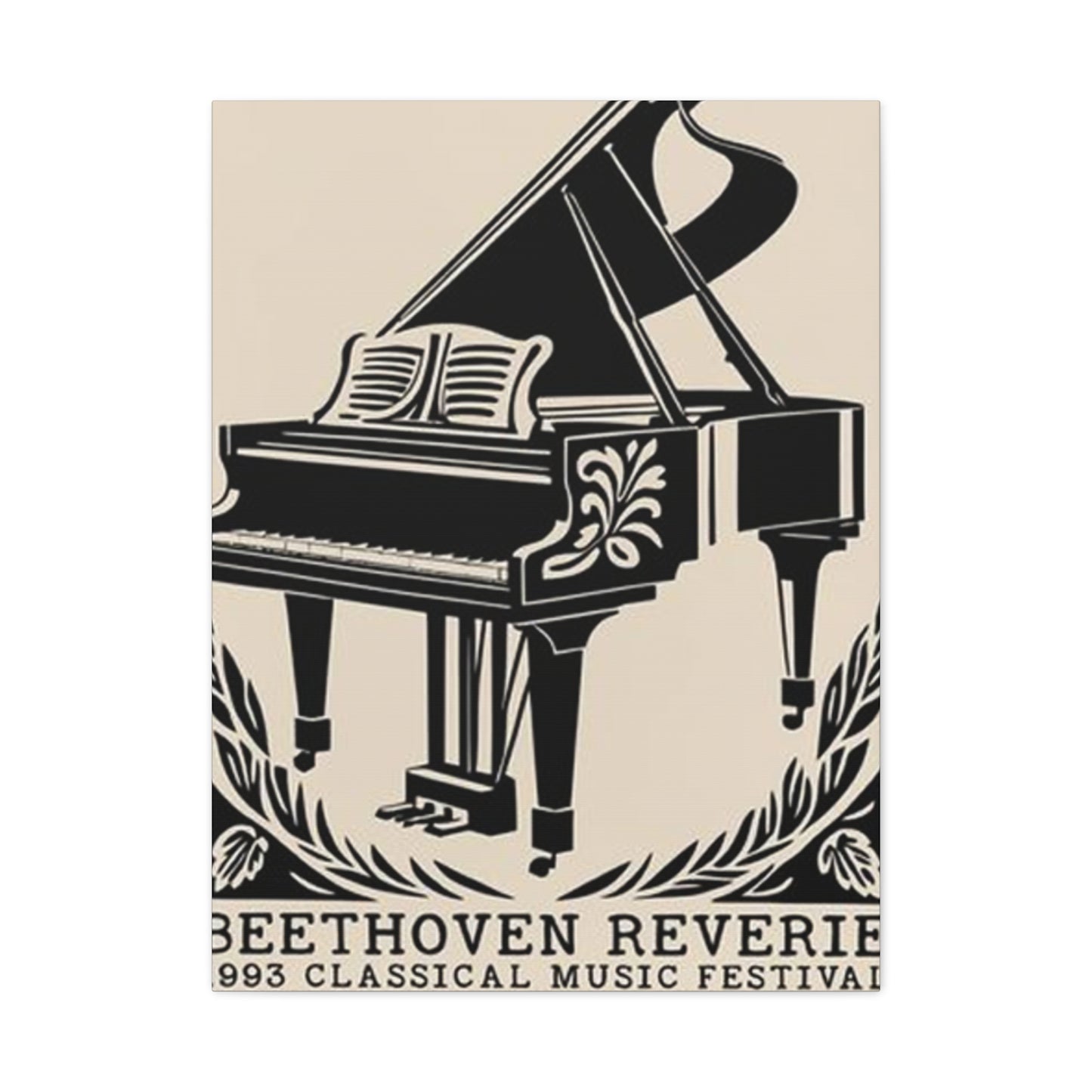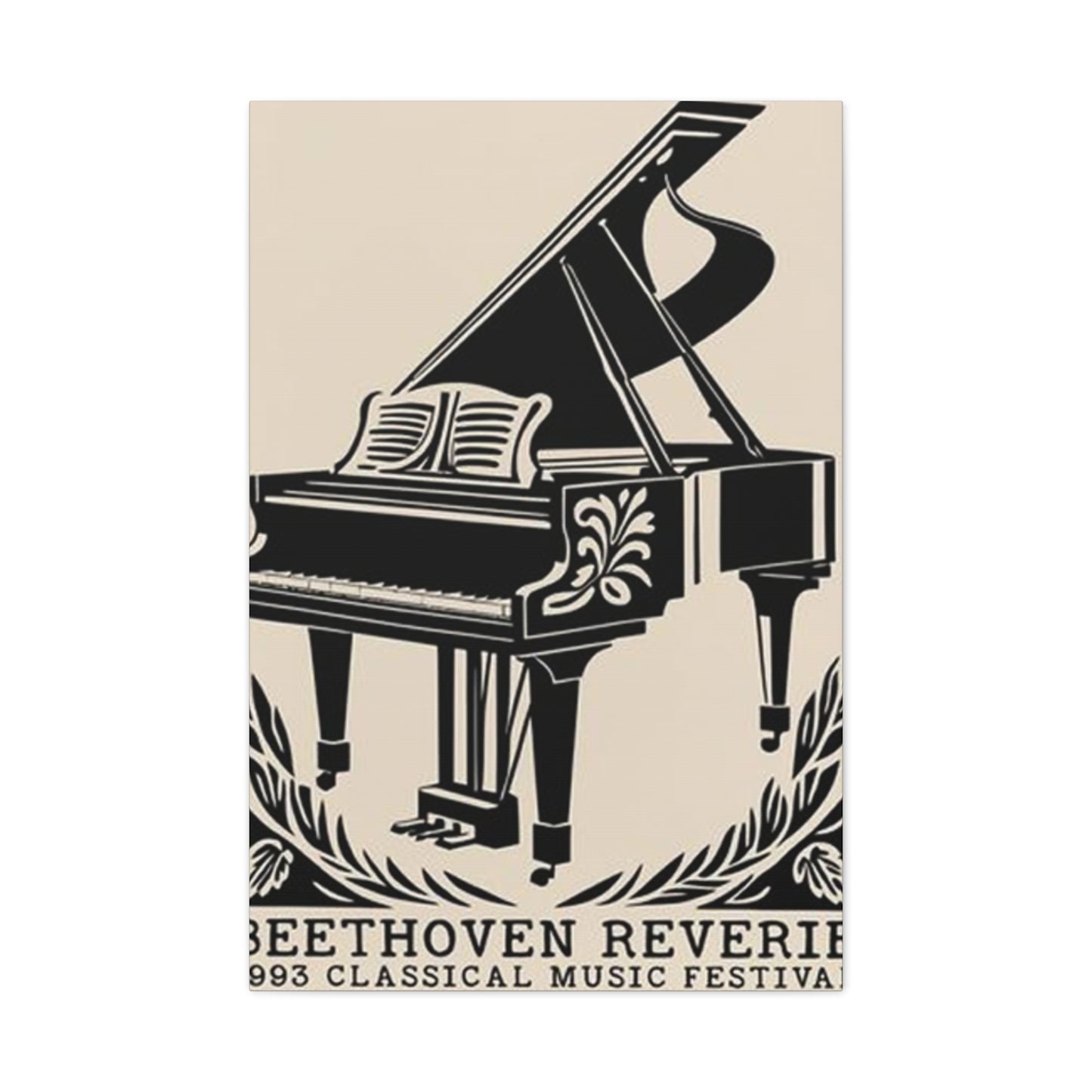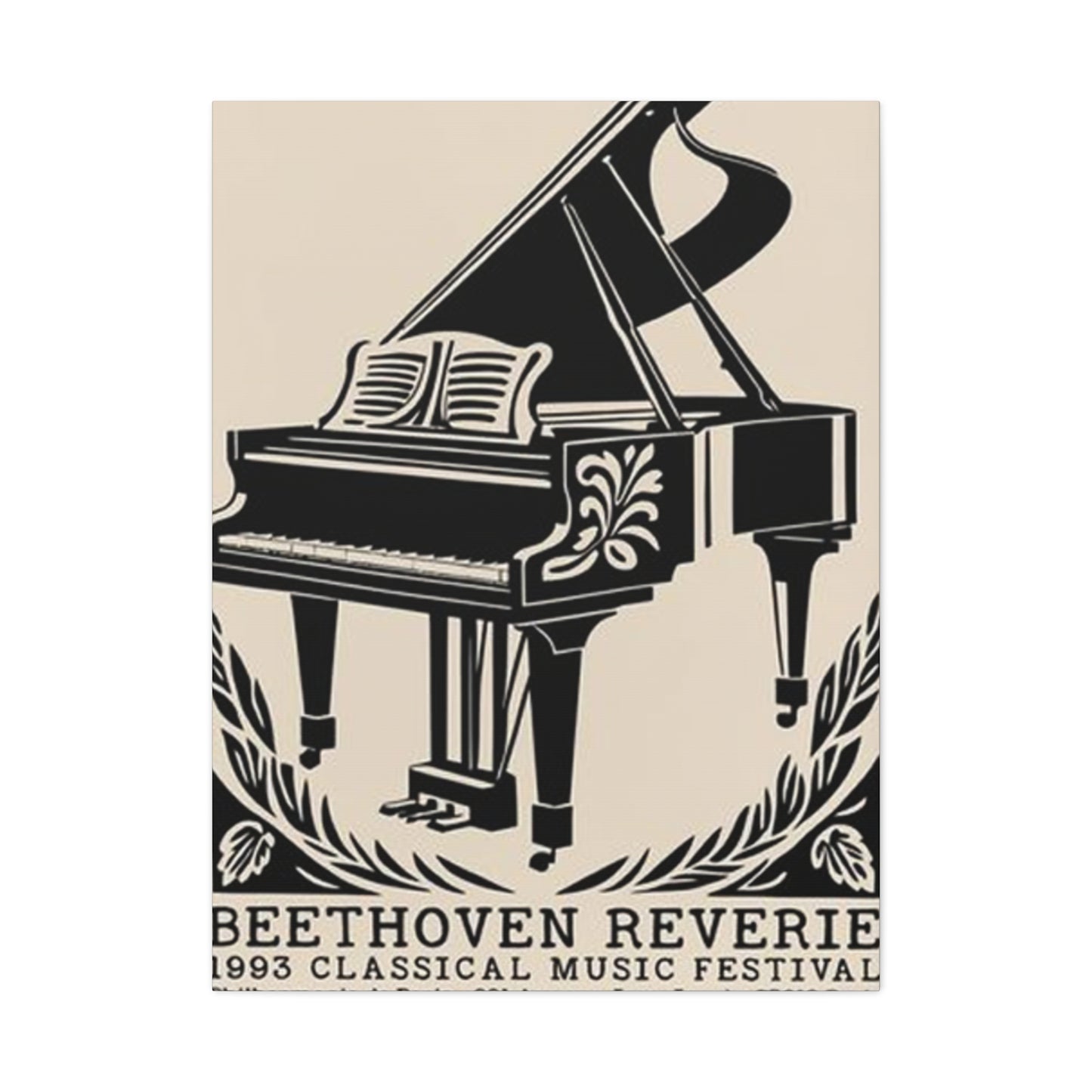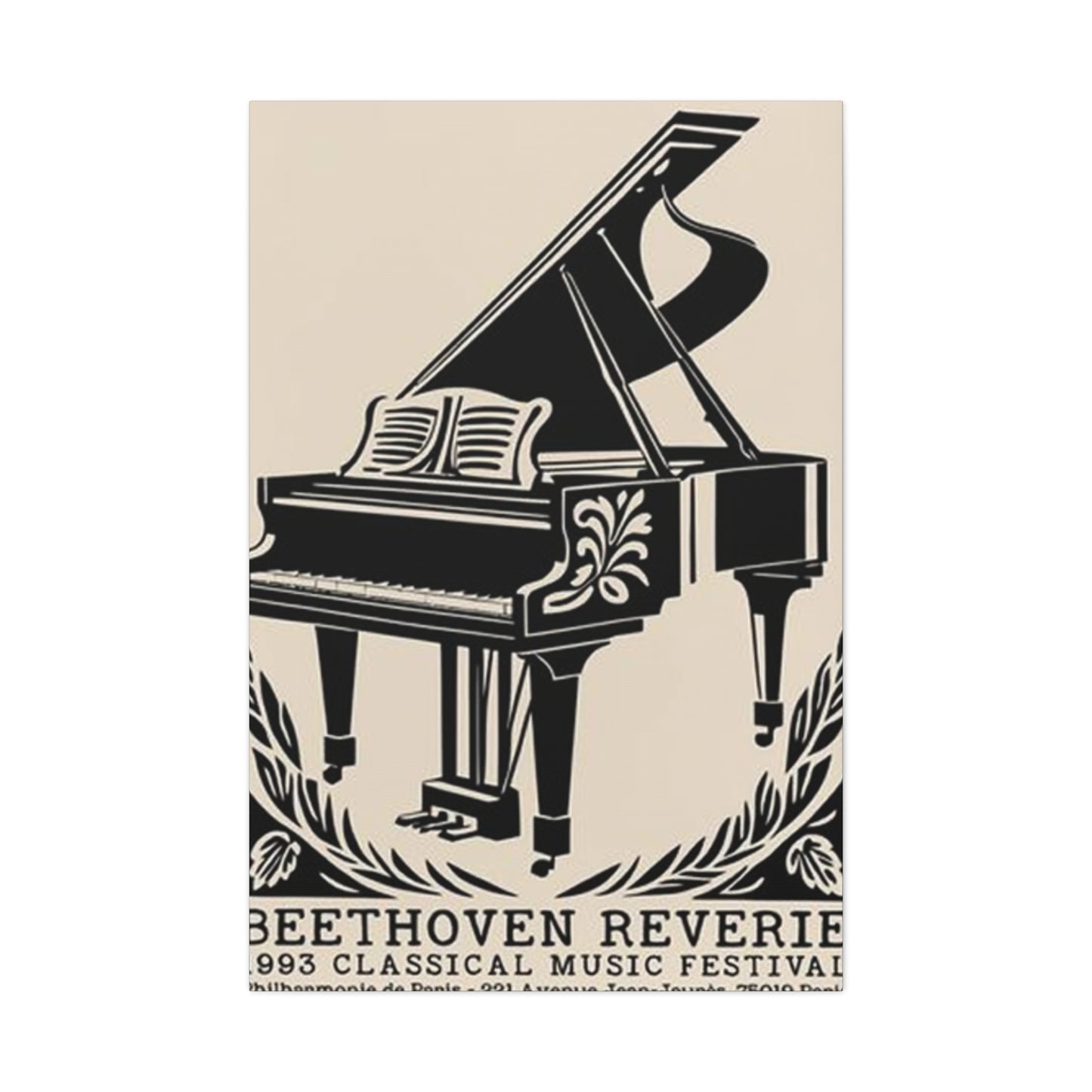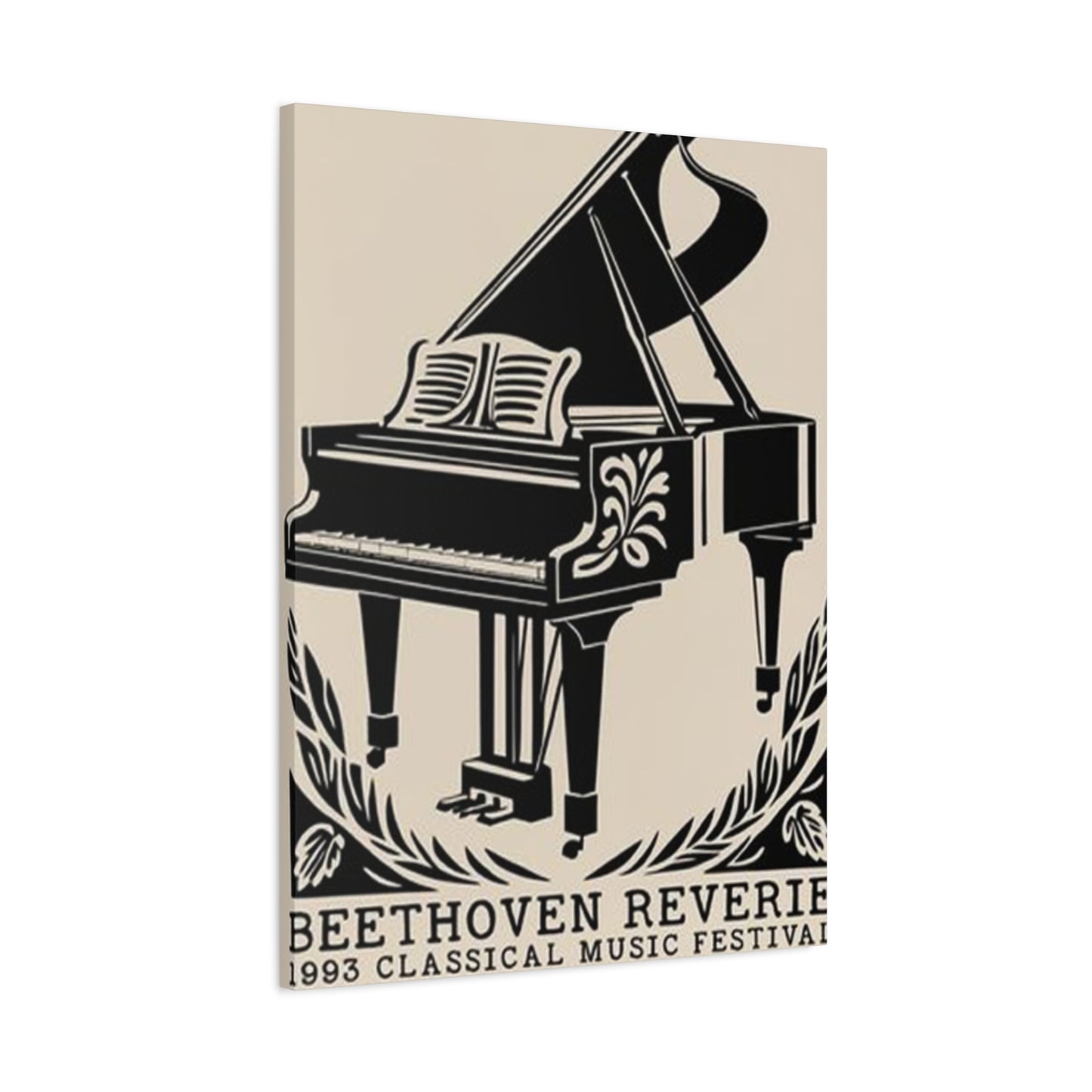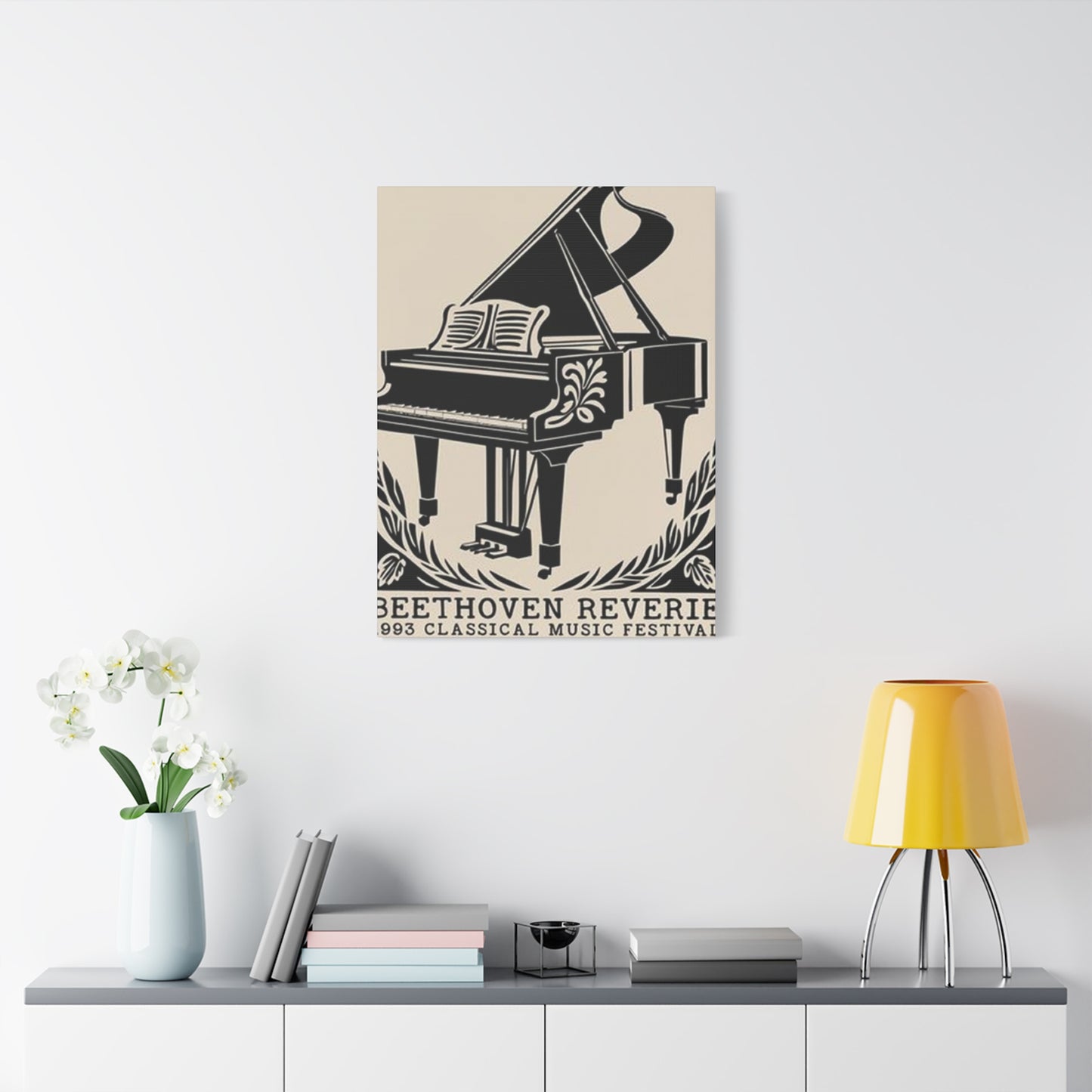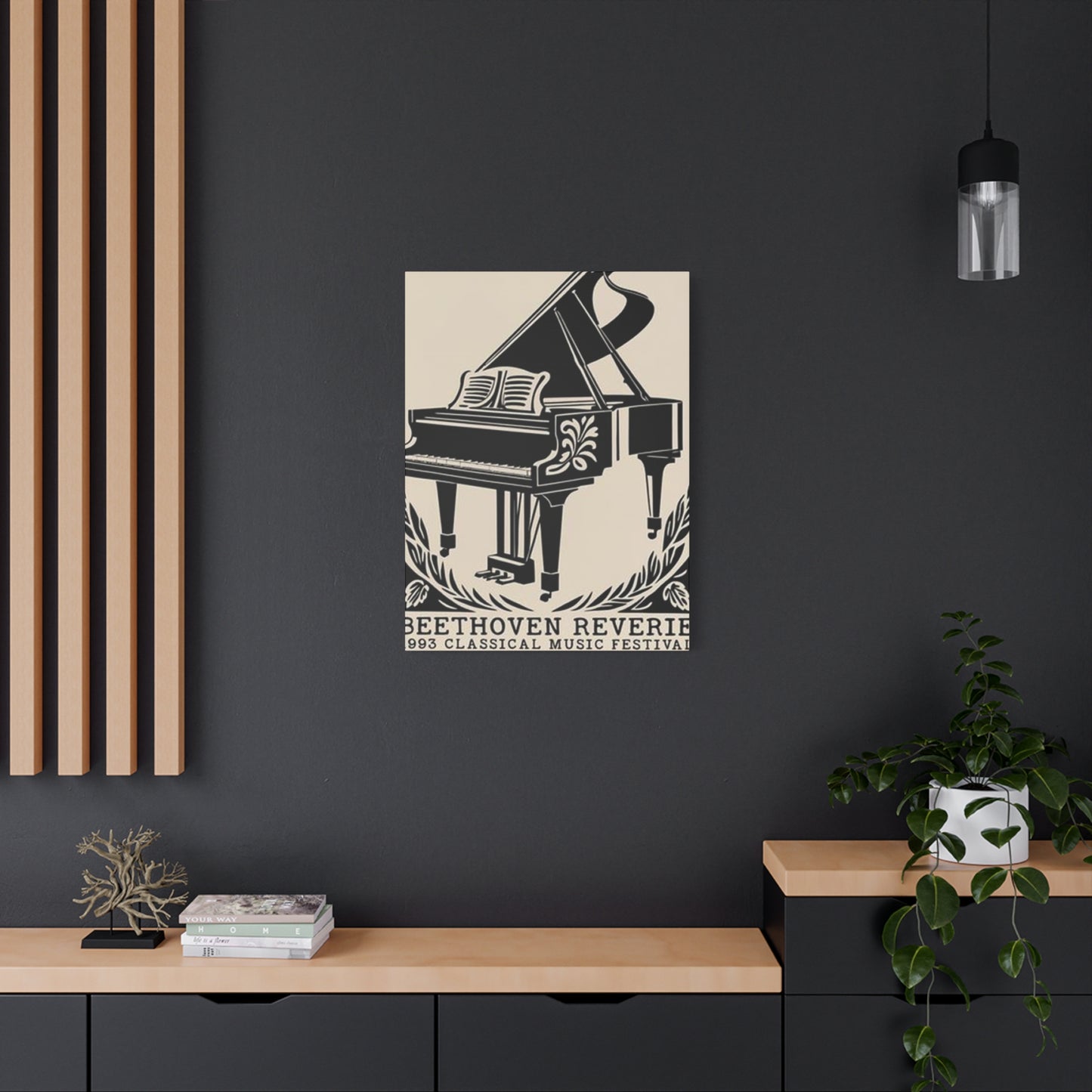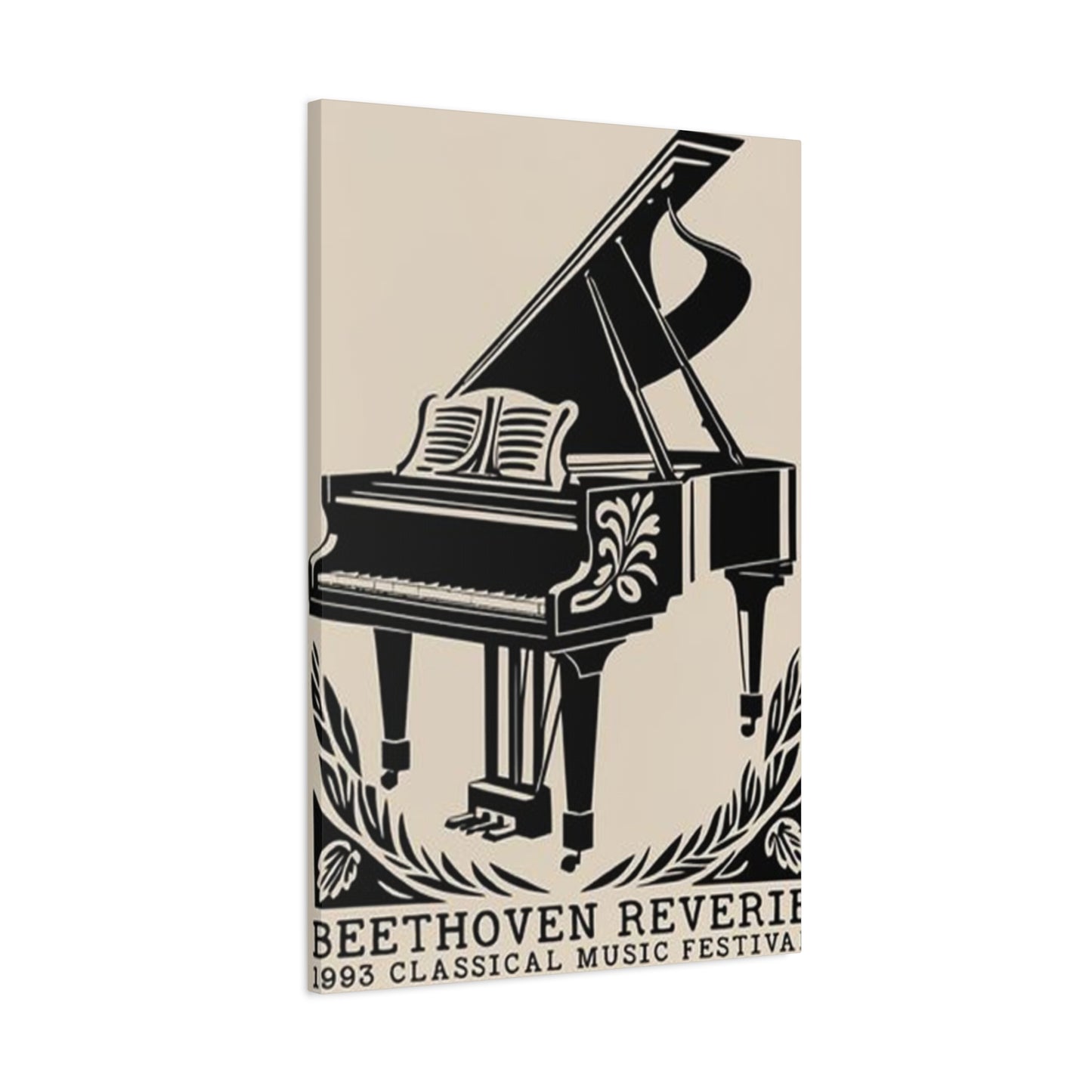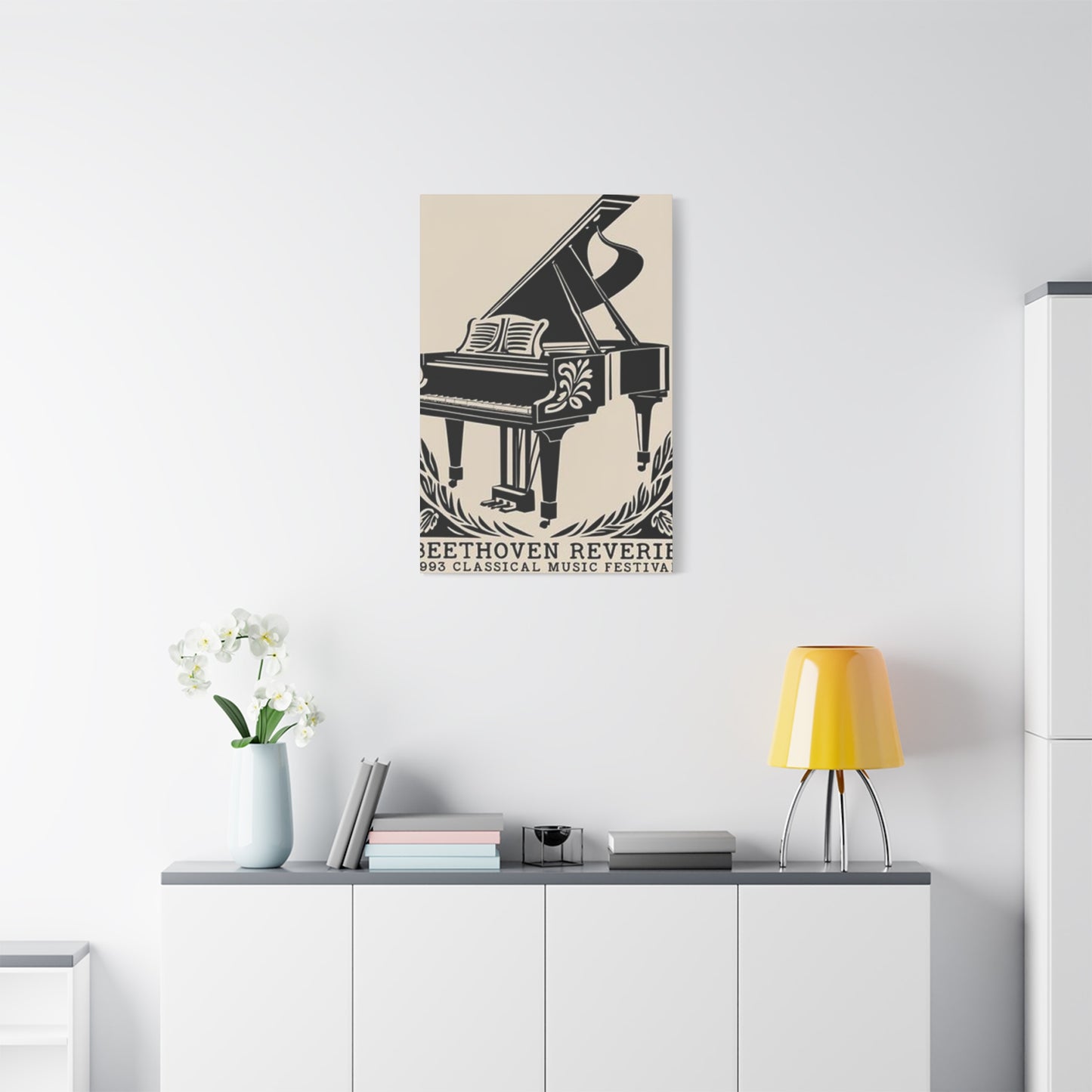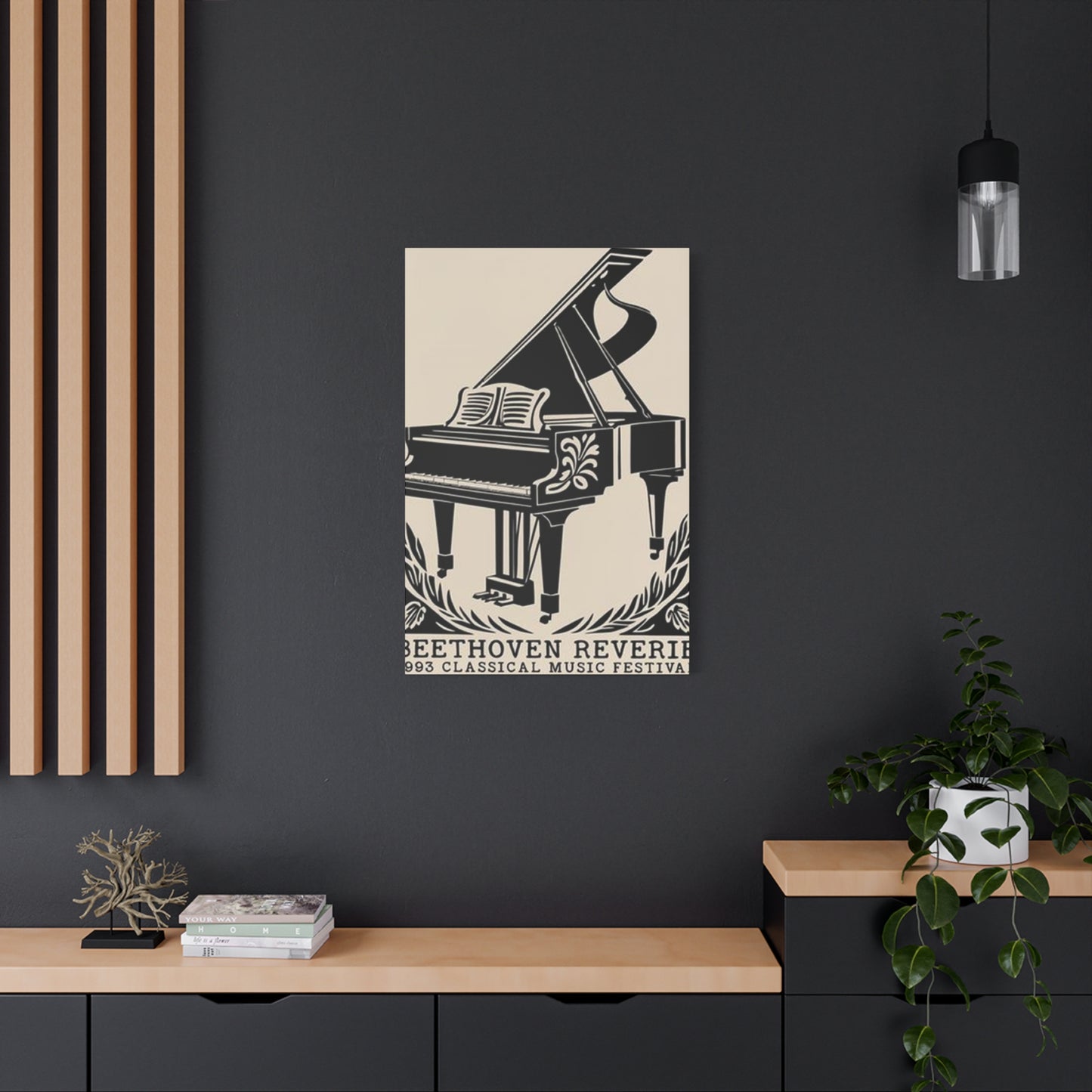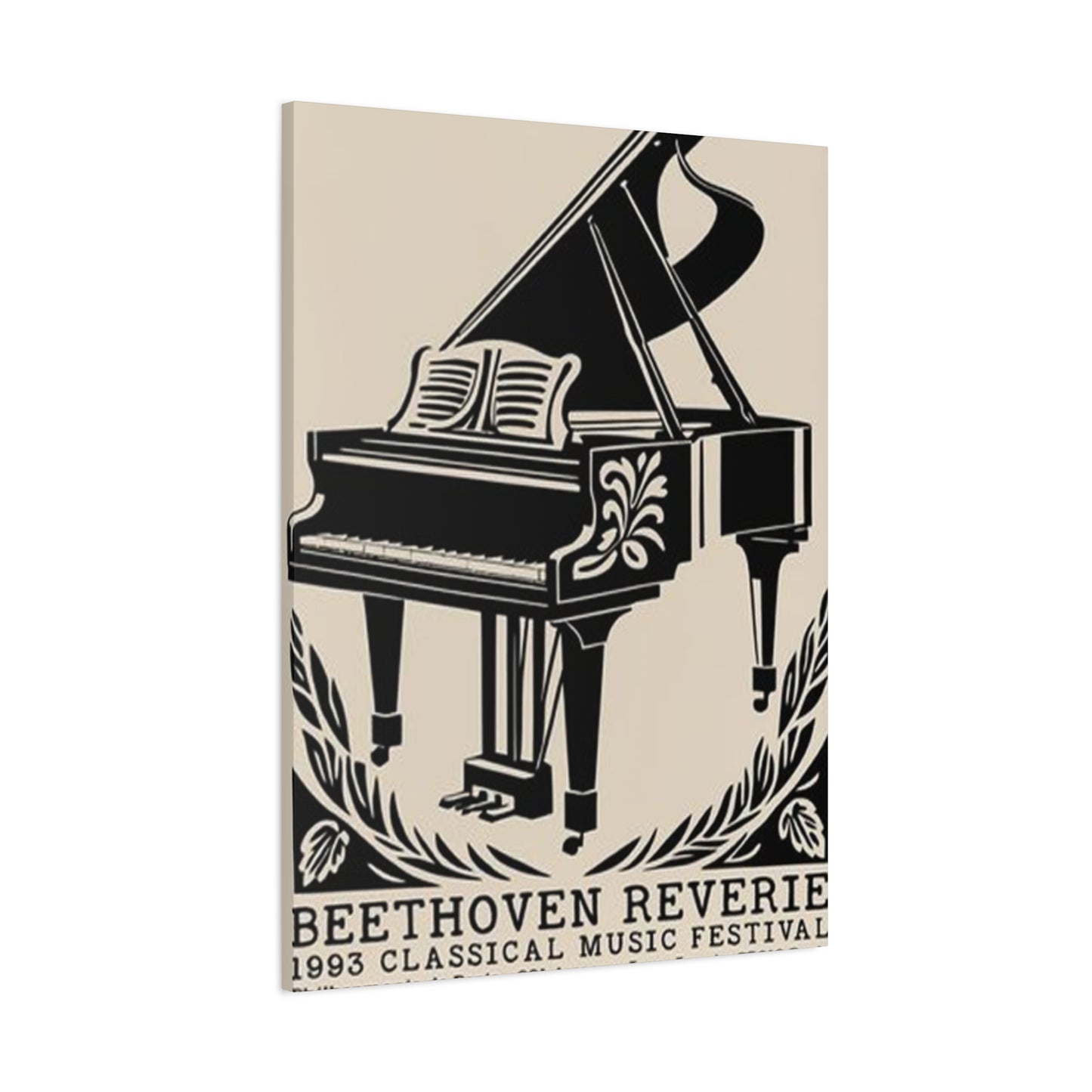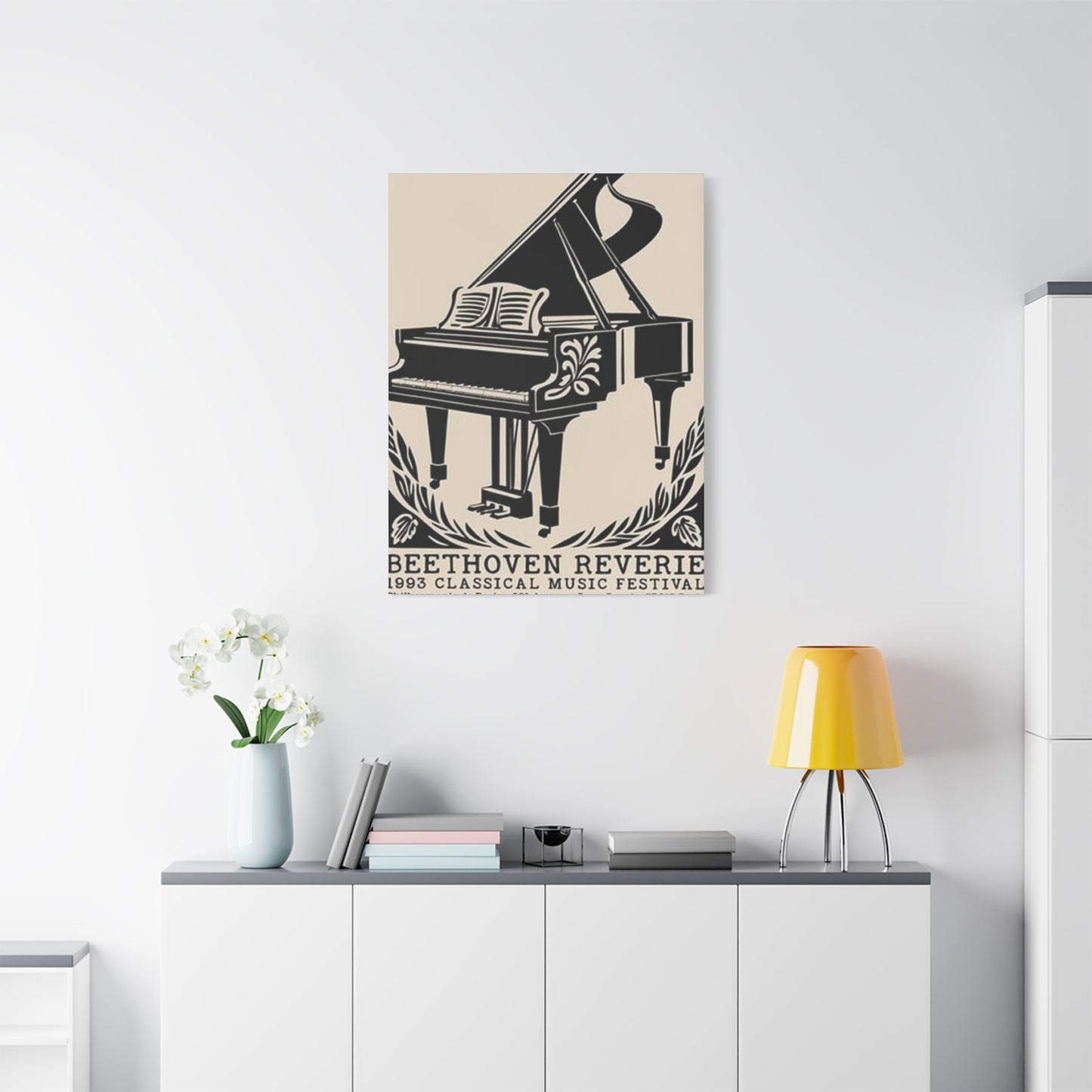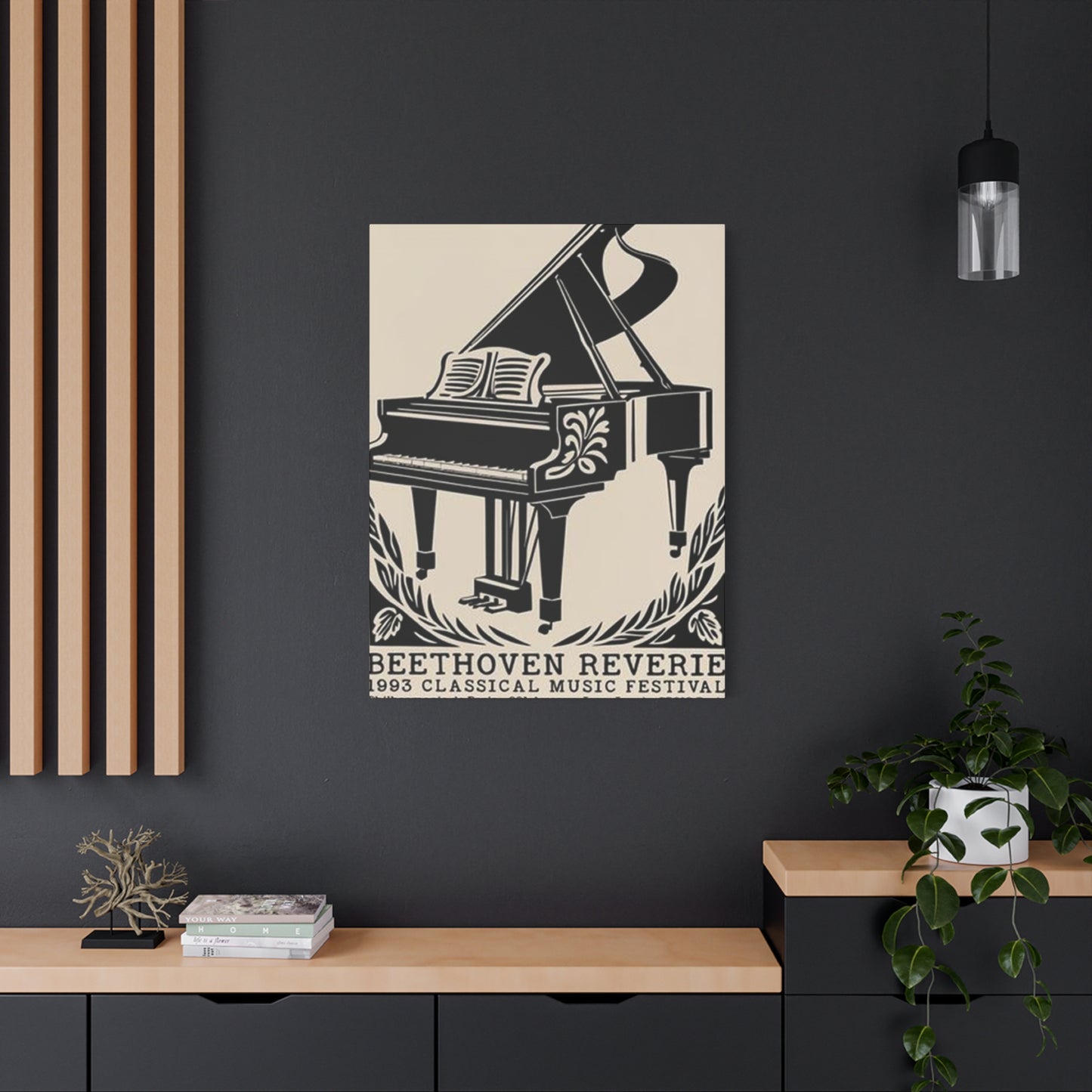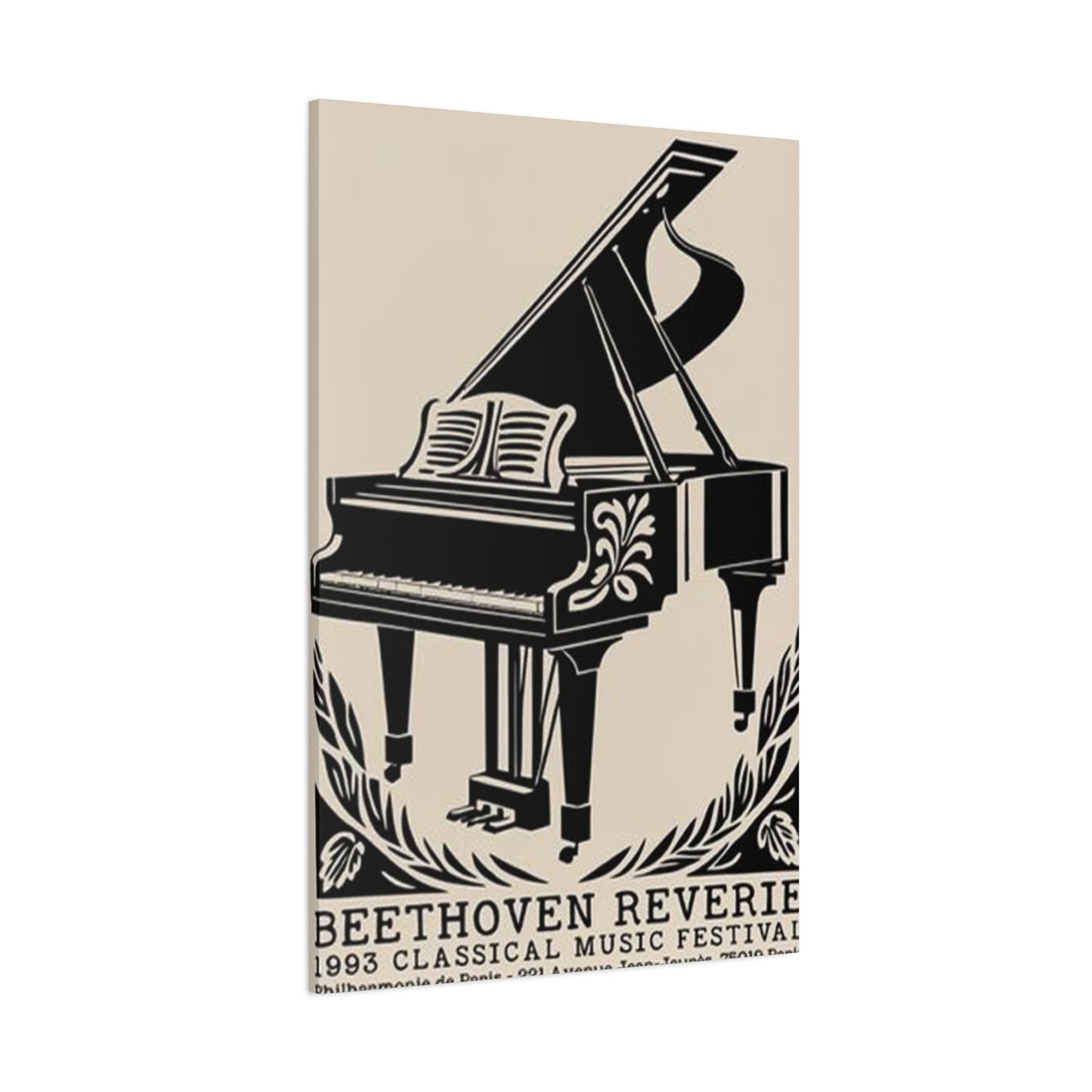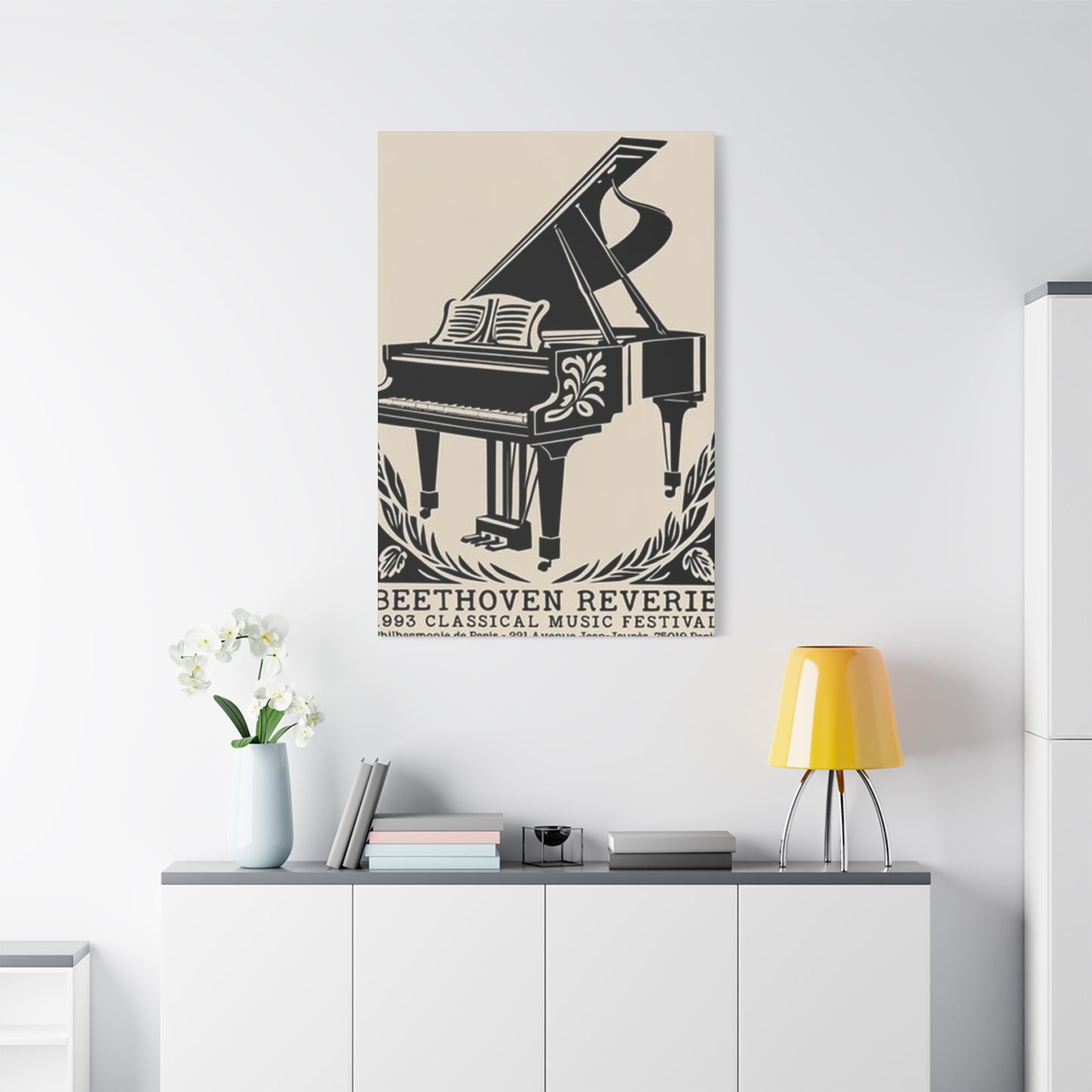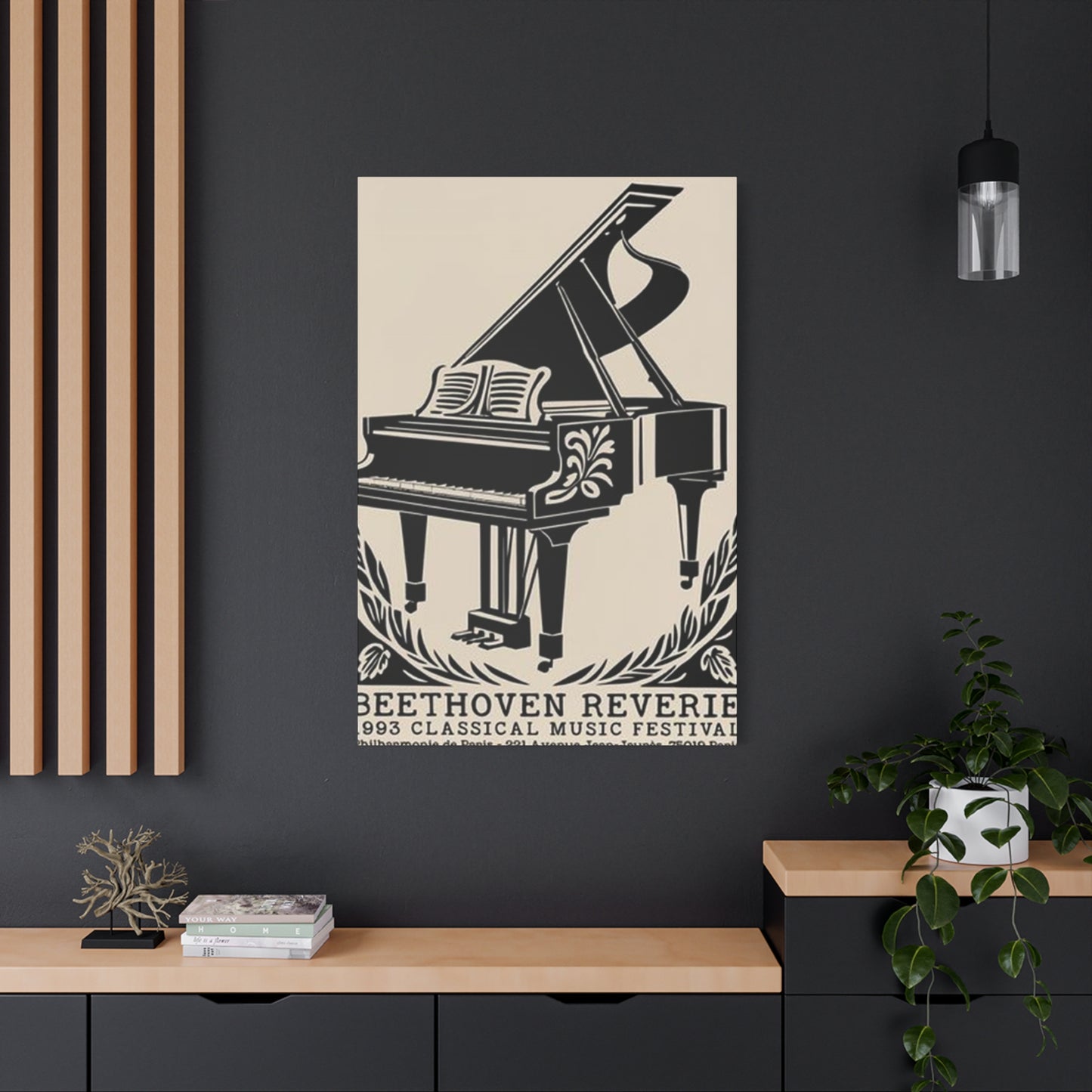Beethoven-Riverie Festival Wall Art: Capturing Europe’s Iconic Classical Music Event
The annual classical music celebration in Riverie showcases some of the most breathtaking orchestral presentations in Europe. Each year, renowned orchestras from across the continent converge to deliver performances that transport audiences into the sublime world of classical composition. The festival's programming committee carefully selects orchestral pieces that demonstrate both technical mastery and emotional depth, creating an atmosphere where music lovers can experience the full spectrum of classical artistry.
The Vienna Philharmonic Orchestra traditionally opens the festival with a powerful rendition of Symphony No. 9 in D minor, setting the tone for the entire event. Their interpretation brings forth the revolutionary spirit that defined the Romantic era, with each movement building upon the last to create a crescendo of musical excellence. The orchestra's precision and unity create moments of pure transcendence that remind audiences why classical music remains eternally relevant.
Following this magnificent opening, the Berlin State Orchestra presents a carefully curated selection of chamber works that showcase the intimate side of classical composition. Their performance style emphasizes the conversational nature of chamber music, where each instrument contributes to a larger musical dialogue. The acoustics of Riverie's main concert hall perfectly complement these smaller ensemble pieces, allowing every nuance and subtle dynamic shift to reach the audience with crystal clarity.
The London Symphony Orchestra brings their distinctive approach to symphonic interpretation, focusing particularly on works from the late Romantic period. Their performances demonstrate how classical compositions can be both historically informed and emotionally immediate, bridging the gap between academic precision and visceral musical experience. The orchestra's reputation for technical excellence is matched by their ability to convey the deepest emotions embedded within each composition.
Regional orchestras also play a crucial role in the festival's programming, bringing unique perspectives and interpretive approaches that reflect their local musical traditions. These ensembles often present lesser-known works that deserve wider recognition, introducing festival attendees to hidden gems of the classical repertoire. Their participation ensures that the festival maintains connections to diverse musical communities throughout Europe.
The festival's orchestral programming extends beyond traditional concert formats to include innovative presentations that combine music with visual arts, theatrical elements, and multimedia components. These experimental performances push the boundaries of classical music presentation while maintaining respect for the fundamental artistic principles that make classical music timeless. Such creative approaches attract younger audiences and demonstrate the continuing relevance of classical music in contemporary culture.
Beethoven-Riverie Festival Celebration of Musical Arts and Heritage
This magnificent annual gathering represents more than just a series of concerts; it embodies a comprehensive celebration of musical heritage that spans centuries of compositional innovation. The festival's founding vision centered on creating a space where classical music could flourish in all its forms, from intimate solo recitals to grand orchestral spectacles. This vision has evolved into a multifaceted cultural event that attracts music enthusiasts from around the world.
The festival's cultural dimension extends far beyond the concert halls, encompassing art exhibitions, literary readings, and philosophical discussions that explore the broader context within which classical music exists. These complementary activities create a rich tapestry of intellectual and artistic engagement that enhances the musical experience. Visitors find themselves immersed in a world where music serves as the centerpiece of a larger cultural conversation.
Educational workshops and masterclasses form an integral part of the festival's cultural mission, providing opportunities for both amateur and professional musicians to deepen their understanding of classical performance practices. Renowned pedagogues lead these sessions, sharing insights gained through decades of professional experience. These educational components ensure that the festival serves not only as entertainment but also as a vital resource for musical learning and development.
The festival's commitment to cultural preservation manifests in its careful documentation of performances and educational activities. Professional recording equipment captures both the musical performances and the surrounding cultural events, creating an archive that serves future generations of music lovers and researchers. This preservation effort recognizes the festival's responsibility to maintain and transmit classical music traditions.
International cultural exchange flourishes during the festival period, as musicians, scholars, and enthusiasts from different countries engage in meaningful dialogue about musical interpretation, performance practices, and the role of classical music in contemporary society. These exchanges often lead to lasting collaborations that extend far beyond the festival's temporal boundaries, creating networks of artistic partnership that enrich the global classical music community.
The festival's programming philosophy embraces both traditional and innovative approaches to classical music presentation. Traditional concert formats receive careful attention to ensure that they meet the highest standards of artistic excellence, while experimental presentations explore new ways of engaging audiences with classical repertoire. This balance between tradition and innovation reflects the festival's understanding that classical music must honor its heritage while remaining vital and relevant.
Conversations with Festival Leaders and Musical Directors
The artistic leadership of this renowned festival brings together some of the most respected figures in the classical music world, each contributing unique perspectives and extensive experience to the event's overall vision. These conversations with festival directors and conductors reveal the deep thoughtfulness and careful planning that goes into creating each year's programming. Their insights provide valuable understanding of how artistic decisions shape the festival experience for both performers and audiences.
Maestro Alessandro Fontana, the festival's principal conductor, emphasizes the importance of creating musical narratives that unfold across multiple performances throughout the festival period. His approach to programming considers how individual concerts relate to each other, creating thematic connections that enhance the overall artistic impact. Fontana's philosophy centers on the belief that classical music festivals should offer audiences journeys of discovery rather than simply collections of isolated performances.
The festival's artistic director, Elena Marchetti, discusses her commitment to balancing established masterworks with lesser-known compositions that deserve wider recognition. Her programming decisions reflect extensive research into musical history and a deep understanding of audience psychology. Marchetti's approach ensures that festival programming remains both accessible to newcomers and challenging for seasoned classical music enthusiasts.
Conductor Marcus Weber speaks passionately about the festival's role in nurturing young talent while honoring the contributions of established artists. His leadership of the festival orchestra demonstrates how experienced professionals can mentor emerging musicians while maintaining the highest performance standards. Weber's conducting style emphasizes clarity and precision while encouraging individual artistic expression within the ensemble framework.
Guest conductor Sophia Lindqvist brings an international perspective to the festival, having worked with orchestras throughout Europe and North America. her insights into different musical traditions and performance practices enrich the festival's artistic palette. Lindqvist's approach to conducting emphasizes the importance of understanding cultural contexts that inform musical interpretation, ensuring that performances respect historical authenticity while remaining emotionally immediate.
The festival's education director, Professor Johann Richter, explains how educational programming integrates seamlessly with the main concert series. His vision for music education extends beyond technical instruction to encompass historical understanding, cultural awareness, and emotional intelligence. Richter's educational philosophy recognizes that classical music appreciation requires both intellectual engagement and emotional openness.
These artistic leaders collectively represent decades of experience in classical music performance, education, and administration. Their diverse backgrounds and complementary skill sets create a leadership team capable of addressing the complex challenges involved in producing a world-class classical music festival. Their ongoing collaboration demonstrates how shared artistic vision can unite professionals from different musical traditions and cultural backgrounds.
Developing Emerging Classical Music Talent Through Festival Programs
The festival's commitment to nurturing young classical musicians represents one of its most significant contributions to the future of classical music. Through carefully structured mentorship programs, educational workshops, and performance opportunities, the festival provides emerging artists with invaluable experiences that shape their professional development. These programs recognize that investing in young talent is essential for ensuring the continued vitality of classical music traditions.
The Young Artists Program offers selected musicians opportunities to work directly with established professionals in masterclass settings. These intensive learning experiences provide emerging artists with personalized instruction that addresses both technical skills and interpretive understanding. Participants in these programs often describe them as transformative experiences that fundamentally change their approach to musical performance and artistic development.
Chamber music coaching sessions pair young musicians with experienced ensemble players, creating opportunities for intensive small-group instruction. These sessions focus on the unique skills required for successful chamber music performance, including communication, timing, and the ability to balance individual expression with ensemble cohesion. Young musicians participating in these sessions develop crucial collaborative skills that serve them throughout their professional careers.
Orchestral training programs provide young musicians with opportunities to perform alongside professional orchestras under the guidance of experienced conductors. These experiences offer insights into professional orchestra operations while allowing young musicians to develop their ensemble playing skills in prestigious performance settings. Many participants in these programs go on to successful careers in professional orchestras throughout Europe and beyond.
Solo performance opportunities allow particularly gifted young musicians to showcase their talents in formal concert settings. These performances are carefully programmed to provide young artists with appropriate challenges while ensuring that they can demonstrate their capabilities to audiences that include music industry professionals. Such exposure often leads to further performance opportunities and professional connections that advance young artists' careers.
The festival's scholarship program provides financial support that enables talented young musicians to participate regardless of their economic circumstances. This commitment to accessibility ensures that the festival's educational benefits reach deserving musicians who might otherwise be unable to participate. Scholarship recipients often become ambassadors for the festival, sharing their experiences and encouraging other young musicians to pursue classical music careers.
Mentorship relationships developed during the festival frequently continue long after the event concludes, creating ongoing support networks for emerging musicians. These relationships provide young artists with continued guidance, professional advice, and career development support. The festival's alumni network includes many successful professional musicians who credit their festival experiences with providing crucial early career support and artistic development opportunities.
Historic Performance Spaces of the Beethoven-Riverie Festival
The festival takes place in some of the most architecturally significant and acoustically superior venues in Europe, each contributing its unique character to the musical experience. These historic spaces have witnessed countless memorable performances throughout their existence, and their very walls seem to resonate with musical history. The careful selection and utilization of these venues reflects the festival's commitment to providing audiences with extraordinary musical experiences in appropriately magnificent settings.
The Grand Concert Hall, dating from the 18th century, serves as the festival's primary venue for large orchestral performances. Its baroque architecture features elaborate ceiling frescoes and ornate decorative elements that create a sense of grandeur appropriate for the most ambitious musical presentations. The hall's acoustics, refined through centuries of use and periodic renovation, provide perfect balance between clarity and warmth, ensuring that every seat in the house offers excellent sound quality.
The intimate Chamber Music Salon, originally designed as a private music room for aristocratic entertainment, now hosts smaller ensemble performances and solo recitals. This venue's smaller scale creates a sense of immediacy between performers and audience that is particularly suitable for chamber music repertoire. The salon's period furnishings and decorative scheme transport audiences back to the era when such music was first performed, creating an authentic historical atmosphere.
The outdoor Amphitheater, carved into a natural hillside overlooking the town, provides a spectacular setting for special evening performances. This venue's unique acoustic properties, created by its natural stone construction and carefully calculated angles, project sound effectively throughout the seating area without artificial amplification. Evening concerts in this setting offer audiences the magical experience of listening to classical music under the stars.
The Cathedral of Saint Cecilia, with its soaring gothic architecture and extraordinary reverberation characteristics, serves as the venue for choral and organ works. This sacred space adds a spiritual dimension to appropriate musical repertoire, creating performance experiences that transcend mere entertainment to become truly transcendent experiences. The cathedral's historic pipe organ, dating from the 16th century, provides an authentic period instrument for baroque and early classical repertoire.
The Historic Opera House, recently restored to its original 19th-century splendor, hosts staged opera productions and large-scale choral works. This venue's sophisticated machinery and backstage facilities allow for elaborate productions that combine musical performance with theatrical spectacle. The opera house's horseshoe-shaped auditorium and multiple tiers create excellent sight lines and acoustics throughout the seating area.
The Modern Rehearsal Complex provides state-of-the-art facilities for educational activities, masterclasses, and smaller performances. While lacking the historical character of the other venues, this facility offers technical capabilities and flexibility that support the festival's educational mission. Its multiple rooms of different sizes accommodate various ensemble configurations and educational activities simultaneously.
Historical Development and Growth of the Festival
The festival's evolution from a small local celebration to an internationally recognized cultural event reflects both changing musical tastes and the dedicated efforts of countless individuals committed to classical music excellence. Understanding this historical development provides valuable context for appreciating the festival's current significance and future potential. The festival's growth pattern demonstrates how grassroots cultural initiatives can evolve into major international events while maintaining their founding artistic principles.
The festival originated in the 1960s as a small community celebration organized by local music enthusiasts who wanted to share their passion for classical music with their neighbors. These early organizers possessed limited resources but unlimited enthusiasm, creating intimate concerts in local venues that attracted small but devoted audiences. Their commitment to artistic quality over commercial success established philosophical foundations that continue to guide festival operations today.
During the 1970s, the festival began attracting attention from professional musicians and music critics, leading to gradual expansion of programming and venue utilization. This growth period saw the introduction of guest artists from outside the local community and the development of more sophisticated marketing and organizational structures. The festival's reputation for artistic excellence began to spread beyond regional boundaries, attracting visitors from distant cities and eventually from other countries.
The 1980s marked a significant expansion phase during which the festival established its current multi-venue format and developed its educational mission. This decade saw the construction of new performance facilities and the renovation of historic venues to meet modern technical standards while preserving their historical character. The festival's educational programming expanded to include masterclasses, workshops, and young artist development programs.
International recognition arrived in the 1990s when major music publications began featuring the festival in their coverage of significant European cultural events. This recognition led to increased participation by world-renowned artists and orchestras, elevating the festival's artistic profile considerably. The festival's programming during this period became more ambitious, featuring complete opera productions and large-scale symphonic works.
The turn of the 21st century brought new challenges and opportunities as digital technology transformed the classical music industry. The festival adapted by incorporating technological innovations while maintaining its commitment to live performance excellence. Digital marketing strategies expanded the festival's reach to global audiences, while improved recording and broadcasting capabilities allowed for wider dissemination of festival performances.
Recent developments have focused on sustainability, accessibility, and cultural diversity, reflecting contemporary social values while maintaining artistic excellence. The festival's current programming includes works by composers from diverse cultural backgrounds and incorporates environmentally responsible practices throughout its operations. These evolutionary changes demonstrate the festival's ability to adapt to changing circumstances while preserving its essential character and mission.
Outstanding Moments from Previous Festival Seasons
The festival's rich performance history includes numerous memorable moments that have become legendary among classical music enthusiasts worldwide. These extraordinary performances demonstrate the magic that can occur when exceptional artists, magnificent venues, and receptive audiences combine in perfect harmony. Documenting these special moments helps preserve the festival's heritage while inspiring future performances that aspire to similar heights of artistic achievement.
The 1987 performance of Beethoven's Ninth Symphony under the direction of Herbert von Karajan remains one of the most talked-about events in festival history. Karajan's interpretation brought unprecedented emotional intensity to the familiar work, with the final movement's choral sections creating moments of transcendence that left many audience members in tears. The performance was recorded and later released commercially, becoming one of the most celebrated interpretations of this masterwork.
Maria Callas's surprise appearance in 1985, performing arias from her most famous operatic roles, created an electrifying atmosphere that transformed the evening into a once-in-a-lifetime experience. Though past her vocal prime, Callas's dramatic intensity and musical intelligence created performances of extraordinary emotional power. The audience's extended standing ovation lasted nearly fifteen minutes, and many attendees still describe this as their most memorable classical music experience.
The 1992 chamber music concert featuring the Amadeus Quartet performing Schubert's String Quartet in D minor demonstrated the profound intimacy possible in small ensemble performance. The quartet's perfect balance and unified musical vision created a performance of exceptional beauty and emotional depth. Critics described the performance as definitive, and it established new standards for chamber music presentation at the festival.
Young pianist Lang Lang's 1999 debut performance electrified audiences with his combination of technical brilliance and musical maturity. His interpretation of Chopin's Piano Concerto No. 1 showcased both virtuosic skill and deep musical understanding, launching his international career. The performance demonstrated the festival's ability to identify and showcase emerging talent before they achieve widespread recognition.
The 2005 staging of Mozart's Don Giovanni in the outdoor amphitheater created an unforgettable theatrical experience that perfectly utilized the venue's natural setting. The production's innovative staging took advantage of the hillside location to create dramatic effects that enhanced the opera's supernatural elements. The performance attracted international attention and established new possibilities for outdoor opera presentation.
A 2010 contemporary music concert featuring world premieres by leading modern composers demonstrated the festival's commitment to expanding the classical music repertoire. These performances challenged audiences while maintaining the festival's standards of artistic excellence. The evening's success proved that classical music audiences are receptive to new works when they are presented with appropriate context and exceptional performance quality.
The 2018 memorial concert honoring festival founder demonstrated the deep emotional connections that develop between the festival and its community. Musicians who had participated in the festival throughout their careers returned to perform in tribute, creating an evening of extraordinary musical and personal significance. The concert celebrated both individual achievement and collective artistic accomplishment, embodying the festival's community-building mission.
Creative Interpretations of Classical Masterworks
The festival's approach to programming classical masterworks emphasizes fresh interpretative perspectives that reveal new dimensions in familiar compositions while respecting their essential character and historical significance. This balance between innovation and tradition requires exceptional artistic judgment and deep understanding of both musical structure and performance practice. The festival's success in achieving this balance has earned recognition from critics and audiences who appreciate both scholarly accuracy and creative vitality.
Period performance practices receive careful attention in the festival's presentation of baroque and early classical repertoire. Authentic instruments, historically informed performance techniques, and scholarly research combine to create performances that transport audiences back to the composers' original musical environments. These historically informed performances often reveal musical details and structural elements that modern instruments and performance practices can obscure.
Contemporary conducting techniques bring fresh insights to romantic and late romantic repertoire, emphasizing dramatic structure and emotional narrative in ways that enhance audience engagement. Modern conductors working with period orchestras create performances that combine historical authenticity with contemporary musical understanding. These interpretations demonstrate how classical music can remain both historically accurate and emotionally immediate.
Innovative programming juxtaposes works from different historical periods to create thematic connections that illuminate compositional techniques and musical development. These creative programming strategies help audiences understand how musical styles evolved while appreciating the unique characteristics of different compositional periods. Such thematic presentations create educational opportunities within entertaining concert experiences.
Guest artists bring unique interpretive perspectives shaped by their diverse cultural backgrounds and musical training. International soloists, conductors, and ensemble musicians contribute interpretive approaches that reflect different musical traditions and performance schools. These diverse perspectives enrich the festival's artistic palette while demonstrating the universal appeal of classical music across cultural boundaries.
Collaborative performances between different types of ensembles create opportunities for innovative musical presentations that expand traditional performance formats. Combinations of orchestral and chamber ensembles, vocal and instrumental groups, and soloists with various accompaniments generate fresh approaches to familiar repertoire. These collaborative efforts often produce surprising and delightful musical discoveries.
Multimedia presentations incorporate visual elements, lighting design, and architectural features to create immersive performance experiences that enhance musical impact. These presentations maintain focus on musical excellence while utilizing supplementary elements to deepen audience engagement. Such innovative approaches attract new audiences while providing regular attendees with fresh perspectives on familiar works.
Educational pre-concert presentations provide audiences with historical context and analytical insights that enhance their appreciation of the musical performances. These presentations, led by musicologists and performers, offer accessible introductions to complex musical concepts and compositional techniques. The combination of educational content and performance creates comprehensive cultural experiences that serve both entertainment and educational purposes.
Festival's Impact on European Classical Music Scene
The festival's influence extends far beyond its annual performance schedule, affecting classical music programming, artist development, and audience engagement throughout Europe. Its success has inspired similar festivals while establishing standards for artistic quality and cultural programming that influence classical music presentation across the continent. Understanding this broader impact helps appreciate the festival's significance within the larger classical music ecosystem.
The festival's emphasis on educational programming has influenced how classical music organizations approach audience development and community engagement. Many European festivals have adopted similar educational components, recognizing their value in cultivating new audiences and deepening existing audience engagement. This educational focus has become a defining characteristic of contemporary classical music festival programming.
Artist development programs pioneered by the festival have been replicated by cultural organizations throughout Europe, creating a network of opportunities for emerging classical musicians. These programs provide crucial early career support that helps young artists transition from student status to professional performance careers. The festival's success in nurturing young talent has established it as a model for artist development programming.
The festival's innovative approach to venue utilization has influenced how cultural organizations think about performance spaces and audience experience. The combination of historic and modern venues, indoor and outdoor settings, and intimate and grand-scale presentations has inspired similar approaches throughout Europe. These venue strategies demonstrate how thoughtful space utilization can enhance musical impact and audience engagement.
Programming strategies developed by the festival have influenced repertoire selection and concert organization throughout the European classical music community. The festival's success in balancing traditional and contemporary works, featuring both established and emerging artists, and creating thematic connections between performances has established new standards for festival programming excellence.
The festival's commitment to international collaboration has fostered cultural exchange that extends beyond its annual event. Musicians, conductors, and cultural administrators who participate in the festival often develop ongoing professional relationships that lead to additional collaborative projects. These networking effects multiply the festival's cultural impact throughout the European classical music community.
Economic impact studies demonstrate the festival's significant contribution to local and regional economic development. The influx of visitors during festival periods provides substantial revenue for local businesses while supporting employment in hospitality, transportation, and cultural services. This economic impact has encouraged government support and private sponsorship that enables continued festival operations and growth.
The festival's success has influenced tourism patterns in the region, attracting cultural tourists who might not otherwise visit the area. This cultural tourism develops sustainable economic benefits while promoting international understanding and cultural exchange. The festival's reputation for excellence has made the region a recognized destination for classical music enthusiasts worldwide.
Comprehensive Travel Information for Festival Visitors
Planning a visit to the festival requires careful consideration of transportation options, accommodation availability, dining preferences, and cultural activities beyond the musical performances. The festival's popularity means that advance planning is essential for securing suitable arrangements and maximizing the enjoyment of the overall experience. Comprehensive travel information helps visitors make informed decisions that enhance their festival experience while avoiding common pitfalls.
Transportation to Riverie is available through multiple airports, with major international hubs offering direct flights during festival season. Regional airports provide alternative access points that may be more convenient depending on visitors' departure locations and travel preferences. Ground transportation from airports includes rental cars, private transfers, and public transportation options that accommodate various budgets and travel styles.
Accommodation options range from luxury hotels in the city center to charming bed-and-breakfast establishments in surrounding villages. Festival attendees should book accommodation well in advance, as the most desirable locations fill quickly once the festival program is announced. Alternative accommodation options include vacation rentals, hostels, and camping facilities that provide budget-friendly alternatives to traditional hotels.
The festival provides shuttle transportation between major hotels and performance venues during concert periods, eliminating parking concerns and allowing visitors to enjoy refreshments without transportation worries. These shuttle services operate on published schedules that coordinate with concert times and intermissions. Walking distances between central venues are manageable for most visitors, and the historic city center is pedestrian-friendly.
Dining options in Riverie include restaurants specializing in traditional regional cuisine as well as international establishments that cater to diverse tastes and dietary requirements. Many restaurants offer pre-concert and post-concert dining options with menus and schedules designed to accommodate festival attendees. Reservations are recommended, particularly for restaurants located near performance venues.
Cultural attractions beyond the festival include museums, historic sites, art galleries, and architectural landmarks that provide additional entertainment and educational opportunities. Many of these attractions offer special exhibitions and programs during festival season that complement the musical programming. Guided tours are available for visitors who prefer structured sightseeing experiences.
Weather during festival season is generally pleasant, but visitors should prepare for possible variations in temperature and precipitation. Comfortable walking shoes are recommended for navigating historic city streets and venue approaches. Evening concerts may require warmer clothing, particularly for outdoor performances in the amphitheater setting.
Shopping opportunities include music stores specializing in classical recordings and sheet music, artisan workshops featuring local crafts, and boutiques offering traditional regional products. The festival marketplace features vendors selling festival-related merchandise, recordings of festival performances, and other music-related items. These shopping opportunities provide ways to take home lasting reminders of the festival experience.
Currency exchange and banking services are readily available throughout the city, with most establishments accepting major credit cards. ATM machines are conveniently located, and currency exchange offices provide competitive rates for international visitors. Festival ticket offices accept various payment methods, including international credit cards and digital payment systems.
Artistic Elements of Festival Production Design
The festival's visual presentation combines traditional theatrical techniques with innovative design approaches to create performance environments that enhance musical impact without overwhelming the artistic focus on musical excellence. Stage design, lighting, and environmental elements work together to support musical performance while creating memorable visual experiences that complement the auditory elements. This careful balance between visual and musical elements requires sophisticated artistic judgment and technical expertise.
Stage design varies significantly between different venues and performance types, with each design carefully tailored to support the specific musical repertoire and performance requirements. Classical orchestral concerts typically utilize traditional staging approaches that focus attention on musical performers while providing appropriate visual dignity. Chamber music presentations often employ more intimate staging that creates conversational atmospheres suitable for smaller ensemble performances.
Lighting design plays a crucial role in creating appropriate atmospheres for different types of musical performances while ensuring that performers have adequate illumination for accurate music reading and visual communication. Traditional concert lighting emphasizes warm, steady illumination that creates comfortable environments for extended listening. Special performances may incorporate more dramatic lighting effects that enhance musical storytelling without creating distractions.
Outdoor venue presentations require specialized technical approaches that account for natural lighting conditions, weather variability, and acoustic considerations unique to open-air performance. These presentations often incorporate natural environmental elements as design components, creating seamless integration between artificial stage elements and natural surroundings. Evening performances in the amphitheater setting utilize sophisticated lighting systems that create magical atmospheres while maintaining practical functionality.
Costume and period dress considerations vary depending on the historical periods represented in musical programming and the specific interpretive approaches chosen by artistic directors. Some performances utilize historically accurate costumes that transport audiences to the compositional periods of the featured works. Other presentations employ contemporary formal wear that emphasizes the timeless relevance of classical music while maintaining appropriate performance dignity.
Technical infrastructure requirements include sound reinforcement systems, recording equipment, and safety systems that support both artistic and practical needs. These technical elements are carefully designed to remain unobtrusive while providing essential functionality for successful performance presentations. State-of-the-art equipment ensures high-quality sound reproduction and recording capabilities while meeting contemporary safety and accessibility standards.
Set design elements are typically minimal in classical music presentations, focusing attention on musical performance while providing visual interest and practical functionality. These design elements may include acoustic shells, decorative backdrops, and furniture pieces that support performer comfort and audience sight lines. More elaborate set designs are reserved for opera productions and special themed concerts that benefit from enhanced visual storytelling.
Production coordination involves complex scheduling and logistics management that ensures smooth transitions between different performances and technical requirements. This coordination includes strike and setup procedures, equipment maintenance, and contingency planning for weather-related or technical challenges. Professional production teams work behind the scenes to create seamless performance experiences that allow audiences to focus entirely on musical content.
Insights from Festival Performers and Artists
The perspectives of musicians who perform at the festival provide valuable insights into the unique artistic environment created by this prestigious event. These professional viewpoints illuminate aspects of festival culture, performance conditions, and artistic collaboration that may not be apparent to audiences. Understanding these professional perspectives enhances appreciation for the complex artistic and logistical achievements that make the festival possible.
Principal orchestral musicians describe the festival as providing exceptional opportunities for artistic collaboration with colleagues from different orchestras and musical traditions. These collaborative experiences expose performers to varied interpretive approaches and technical methods that enrich their own musical development. Many musicians report that festival performances represent career highlights that influence their subsequent artistic growth and professional relationships.
Solo performers appreciate the festival's combination of prestigious venues, exceptional acoustics, and knowledgeable audiences that create optimal conditions for meaningful artistic expression. The festival's reputation attracts audiences who are genuinely passionate about classical music, creating reciprocal energy between performers and listeners that elevates performance quality. These ideal performance conditions allow artists to take creative risks that might be impractical in less supportive environments.
Chamber music performers value the festival's emphasis on small ensemble work and the opportunities it provides for intensive rehearsal and artistic development. The festival's rehearsal facilities and scheduling allow for thorough preparation that is often impossible in commercial performance settings. These optimal rehearsal conditions enable chamber ensembles to achieve levels of musical unity and expressive depth that create truly memorable performance experiences.
Conductors praise the festival's commitment to providing adequate rehearsal time and technical support that enables them to realize their artistic visions fully. Many conductors describe festival performances as representing the highest levels of musical achievement in their careers. The festival's artistic environment encourages ambitious programming and innovative interpretive approaches that advance the art of classical music performance.
Young artist participants describe the festival as providing transformative educational experiences that fundamentally influence their professional development. The opportunities to observe master performers, receive individual instruction, and participate in professional-level performances provide invaluable learning experiences. Many emerging artists credit their festival participation with providing crucial career development that would not have been available through other educational channels.
International guest artists appreciate the festival's sophisticated international perspective and its success in creating cultural exchange opportunities. Musicians from different countries and musical traditions find common ground through shared commitment to musical excellence while learning from each other's diverse approaches to classical music interpretation. These cultural exchanges often lead to ongoing collaborations that extend far beyond the festival period.
Administrative and technical personnel describe the festival as providing exceptional professional development opportunities within a supportive artistic environment. The festival's reputation for excellence extends to all aspects of its operations, creating work environments that challenge and inspire all participants. These professional development opportunities help maintain the high standards that define festival operations and artistic achievement.
Featured Solo Artists at Beethoven-Riverie
The festival's tradition of presenting world-renowned soloists creates performance opportunities that rank among the most prestigious in the classical music calendar. These artists bring exceptional technical skill, interpretive insight, and international reputation to performances that often become defining moments in both their careers and the festival's history. The careful selection of solo performers reflects the festival's commitment to artistic excellence and its ability to attract the finest classical musicians in the world.
Pianist Yuja Wang's recent festival appearances have demonstrated her extraordinary technical capabilities and musical intelligence in performances that have redefined expectations for piano virtuosity. Her interpretations of challenging romantic repertoire showcase both physical prowess and deep musical understanding that create transcendent performance experiences. Wang's ability to combine spectacular technique with genuine musical expression exemplifies the highest levels of artistic achievement.
Violinist Joshua Bell's festival performances have established new standards for string instrument artistry through his combination of technical perfection and emotional immediacy. His interpretations of classical and romantic violin concertos demonstrate how contemporary performers can bring fresh insights to familiar repertoire while honoring traditional performance practices. Bell's festival appearances consistently generate critical acclaim and audience enthusiasm.
Cellist Ma Yo-Yo's festival participation brings world-class artistry and cultural perspective to performances that transcend typical concert experiences. His approach to classical repertoire emphasizes the universal emotional content of musical masterworks while demonstrating exceptional technical command. Ma's festival performances often include innovative programming that explores connections between classical music and other cultural traditions.
Soprano Anna Netrebko's operatic performances at the festival represent the highest levels of vocal artistry and dramatic interpretation. Her ability to combine technical vocal excellence with compelling theatrical presence creates opera performances that satisfy both musical and dramatic requirements. Netrebko's festival appearances attract international attention and demonstrate the festival's capability to present world-class opera productions.
Conductor and pianist Daniel Barenboim's dual role performances showcase his exceptional musical versatility and deep understanding of classical repertoire. His appearances as both conductor and soloist create unique performance experiences that demonstrate comprehensive musicianship at the highest professional level. Barenboim's festival participation adds intellectual depth and artistic gravitas to the overall programming.
Young artist winners from international competitions bring fresh perspectives and emerging talent to festival programming while maintaining the high artistic standards that define festival performances. These appearances provide exceptional exposure for developing artists while offering audiences opportunities to discover new talents before they achieve widespread recognition. The festival's support of emerging artists demonstrates its commitment to the future of classical music.
Chamber music collaborations between featured soloists create special performance opportunities that showcase different aspects of these artists' musical capabilities. These collaborative performances often reveal interpretive insights and musical relationships that are not apparent in solo or concerto performances. Such collaborations contribute to the festival's reputation for presenting unique and memorable musical experiences that cannot be duplicated elsewhere.
Testimonials and Stories from Festival Participants
The personal experiences of festival attendees provide compelling testimony to the transformative power of exceptional classical music presentation in inspiring cultural and educational settings. These individual stories illuminate the profound impact that high-quality musical experiences can have on people from diverse backgrounds and varying levels of classical music experience. Understanding these personal impacts helps explain the festival's continued growth and its importance within the broader cultural landscape.
Long-time festival attendee Margaret Thompson describes her twenty-year relationship with the festival as a journey of musical discovery that has fundamentally enriched her life. Her testimonial emphasizes how annual festival attendance has deepened her appreciation for classical music while providing opportunities to experience works and artists that would otherwise be inaccessible. Thompson's story demonstrates how cultural events can create lasting personal relationships between audiences and artistic communities.
First-time visitor Carlos Mendoza describes his festival experience as exceeding all expectations and creating an immediate desire to return for future seasons. His testimonial focuses on the festival's welcoming atmosphere and the accessibility of its educational programming for newcomers to classical music. Mendoza's positive experience demonstrates the festival's success in creating inclusive environments that encourage classical music exploration.
Music educator Sarah Williams explains how festival attendance has enhanced her teaching effectiveness by providing direct exposure to world-class performance standards and innovative educational approaches. Her professional perspective highlights the festival's value as a resource for music education professionals seeking to improve their own knowledge and teaching methods. Williams' testimonial underscores the festival's broader educational impact beyond its immediate audience.
Local resident Heinrich Mueller describes how the annual festival has transformed his community and provided economic benefits while maintaining local character and cultural values. His testimonial addresses the positive relationship between the festival and its host community, demonstrating successful cultural tourism that benefits all stakeholders. Mueller's perspective illustrates how well-managed cultural events can enhance rather than disrupt local communities.
Young musician Jennifer Chang credits her festival participation with providing crucial career development and professional networking opportunities that advanced her classical music career. Her testimonial emphasizes the festival's role in supporting emerging artists and creating pathways to professional success. Chang's story demonstrates how festival participation can provide tangible professional benefits for developing musicians.
International visitor Professor Akira Tanaka describes how festival attendance has influenced his scholarly research and provided insights into European classical music traditions. His academic perspective highlights the festival's value as a cultural research resource and its contribution to international scholarly exchange. Tanaka's testimonial demonstrates the festival's significance within academic and intellectual communities.
Family attendee Robert Johnson explains how festival participation has become a cherished annual tradition that brings multiple generations together around shared musical experiences. His testimonial emphasizes the festival's success in creating family-friendly programming that appeals to different age groups while maintaining artistic integrity. Johnson's story illustrates how cultural events can strengthen family relationships and create lasting memories.
Arts philanthropist Catherine Morrison describes her long-term financial support for the festival as one of her most rewarding charitable commitments. Her testimonial explains how the festival's mission and achievements justify continued philanthropic investment while providing meaningful personal satisfaction. Morrison's perspective demonstrates the festival's success in building supportive relationships with cultural donors and community leaders.
Conclusion
Beethoven-Riverie Festival Wall Art captures the grandeur, elegance, and cultural significance of Europe’s premier classical music celebration, transforming interiors into spaces that celebrate artistry, passion, and musical heritage. These artworks highlight iconic festival moments, renowned musicians, and the majestic ambiance of performance venues, allowing viewers to connect visually with the emotional power and sophistication of classical music. Perfect for music lovers, art enthusiasts, and interior designers, Beethoven-Riverie Festival wall art brings cultural refinement and timeless inspiration into living spaces, offices, or creative environments.
Incorporating Beethoven-Riverie Festival wall art into interiors allows spaces to resonate with sophistication, elegance, and artistic energy. In living rooms, music rooms, or study areas, these artworks serve as focal points that inspire reflection, creativity, and appreciation for musical excellence. In offices, studios, or performance spaces, they create an ambiance that fosters focus, creativity, and cultural engagement. The versatility of festival-inspired art ensures it complements a wide range of décor styles—from classical and contemporary to eclectic or modern minimalist interiors—enhancing spaces with visual depth, thematic richness, and a sense of cultural gravitas.
The artistry behind Beethoven-Riverie Festival wall art emphasizes detail, atmosphere, and emotional expression. Artists often capture the essence of musical performances through evocative compositions, dynamic lighting, and nuanced representation of musicians and instruments. Each piece conveys the movement, emotion, and passion inherent in classical music, transforming ordinary walls into immersive visual narratives that celebrate creativity and tradition. This approach ensures the artwork is more than decorative—it is a tribute to the enduring legacy of Beethoven, classical music, and European cultural heritage.
Ultimately, Beethoven-Riverie Festival Wall Art elevates interiors by merging musical artistry with visual elegance. It transforms walls into inspiring, culturally enriched spaces that evoke sophistication, creativity, and emotional resonance. By featuring this artwork, individuals can bring the grandeur, passion, and timeless beauty of classical music into their homes, offices, or creative spaces—making it a captivating and enduring addition to any interior décor.

















